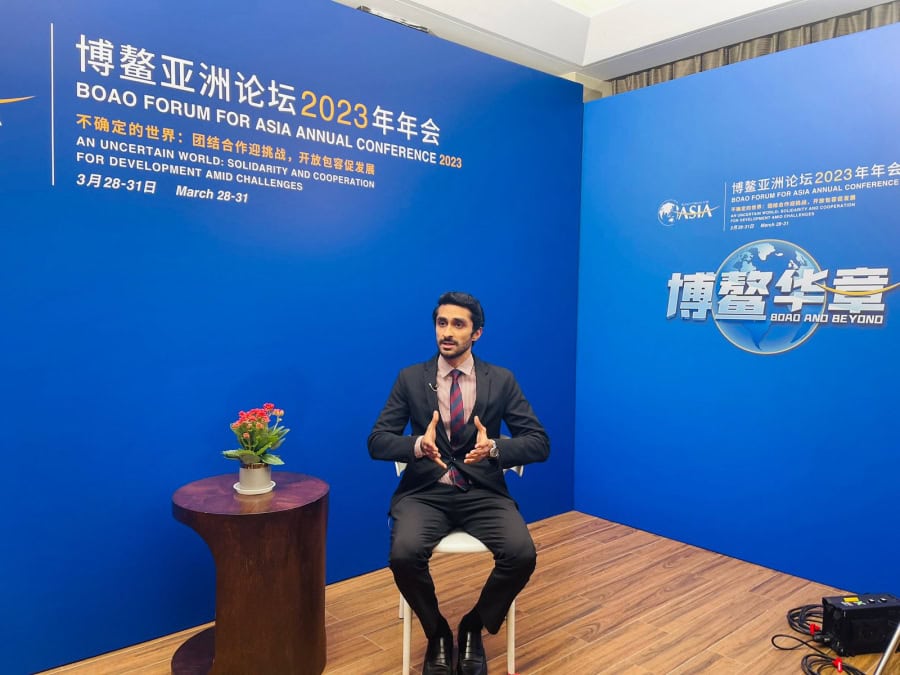Boao forum for Asia Annual Conference 2023
Saud Faisal Malik Boao, china
Regional economic integration has been advancing in Asia, according to a report released by the Boao Forum for Asia (BFA) on Tuesday.
The BFA Asian Economic Outlook and Integration Progress Annual Report 2023 states that in 2021, global dependence on Asian trade in goods remained stable, and the trade dependence between Asian economies remained at a relatively high level. The status of ASEAN and China as hubs for trade in goods remained unchanged.
Most major Asian economies have increased their dependence on Asian factories over the past decade, according to the report.
“Asia has a significant advantage of producing competitive products in global value chains.
Of the top 22 intermediate products from Asian factories in terms of export value, 21 have shown significant growth in exports, with electronic component products such as integrated circuits growing the fastest, at a growth rate of up to 28.8 percent in 2021,” the report said.
In 2021, foreign direct investment (FDI) inflows into the Asia-Pacific region accounted for 45 percent of global FDI inflows, reaching a record high of over $710 billion, according to the report.
“Deepened financial integration in Asia has made regional economies more resilient against negative impacts from international capital flows.
As of the end of 2021, the stock of global portfolio investment outflows in Asia was close to $11.7 trillion,” the report said.
By the end of 2021, Asian economies allocated 19.5 percent of their global portfolio investment to markets in Asia. Among Regional Comprehensive Economic Partnership (RCEP) economies, Indonesia, Malaysia and Singapore had the highest level of portfolio investment allocation to the region, the report added.
China’s economy is seeing a strong rebound, and the IMF’s January forecast puts its GDP growth at 5.2 percent this year—a sizeable increase of more than 2 percentage points from the 2022 rate,” said IMF managing director Kristalina Georgieva.
According to a China Economic Net(CEN), the robust rebound means China is set to account for around one third of global growth in 2023—giving a welcome lift to the world economy, she said during the China Development Forum 2023.
Beyond the direct contribute to global growth, Georgieva said IMF’s analysis shows that a 1 percentage point increase in GDP growth in China leads to 0.3 percentage point increase in growth in other Asian economies, on average.
For the world economy, however, spring is yet to come.
“We expect 2023 to be another challenging year, with global growth slowing to below 3% as scarring from the pandemic, the war in Ukraine, and monetary tightening weigh on economic activity.
Even with a better outlook for 2024, global growth will remain well below its historic average of 3.8%,” she said.
Among the weak global economy, Georgieva said policymakers had acted decisively in response to financial stability risks, adding that IMF will continue to monitor developments closely and pay close attention to the most vulnerable countries, in particular low-income countries with high levels of debt.
In addition, Georgieva highlighted two opportunities for policymakers at the meeting. One is to raise productivity and rebalance the economy away from investment and towards more consumption-driven growth. The second is green growth.
China has played a constructive role in addressing global challenges, including its contributions to Poverty Reduction and Growth Trust and helping highly-indebted countries, Georgieva said and called on all countries to work together to foster more peace and prosperity—a global economy in full bloom.










